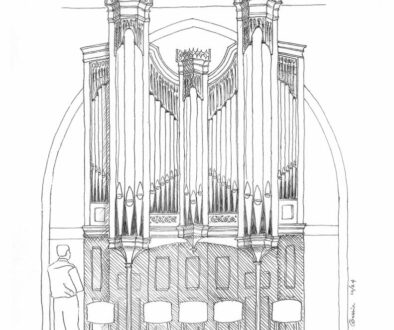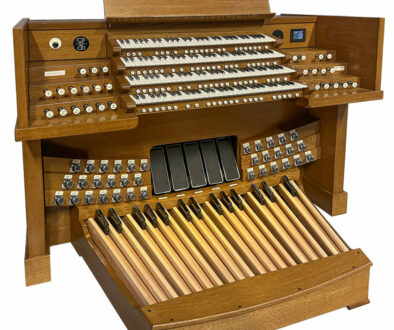Put the Power in the Swell
Saint Alban’s Episcopal Church in Waco, TX is a healthy, growing parish with three choral services every Sunday. Eugene Lavery, Organist and Director of Music, leads a semi-professional Parish Choir and a Chorister Program in the Anglican tradition. When the time came to build a new organ for Saint Alban’s, the church entrusted us with creating an organ that would support a full-scale Anglican music program – a church organ in the symphonic style.
As with any organ project, decisions about where to focus resources were important to achieving our goal. Saint Alban’s is not a very large church, and so the organ needed to be modest in size and focused squarely on the accompaniment of the Anglican service. This meant an emphasis on 8’ tone and building a diapason chorus fit to lead congregational singing. It also meant putting the power of the organ where it’s needed most: in the Swell.
When we sing a hymn, the diapasons are leading us. Like the string section of an orchestra, the diapasons make up the core and most critical part of the symphonic organ’s sound. The Saint Alban’s organ has several 8’ diapasons, three of which are in the Great/Gallery. Just as the congregation loves singing to the sound of beautiful diapasons, so too does the choir feel secure when supported by their tone. For this we have in the Swell our Horn Diapason and 4’ Gemshorn (a tapered diapason in the English tradition, not a whisper stop).
One of the most thrilling effects in organ playing is the power of the Swell behind a closed box. More than just an effect, though, the value of a powerful, versatile Swell is critical to accompanying and organ playing in general. For Saint Alban’s, we designed this division to have everything needed to carry the choir from pp to ff. There is a particular focus on various reed colors, with four 8’ reeds in this department.
The third manual, usually called the Choir, is instead called the Solo because, in addition to Choir and Gallery stops, it contains both accompaniment and solo voices from the Great and Swell. Of special note here is the small yet vital Choir division. The church did not have room for what most would call a “complete” division, yet here again we found just two stops under expression can accomplish a lot of the Choir division’s work. The set of Dulcianas (again, small diapasons) offer numerous possibilities in accompaniment and solo playing as support and contrast. The Clarinet gives the organist another color reed in a different swell box for dynamic control and flexibility. The Gallery division is used with the main organ to add support for hymn singing. It has its own one manual console for accompaniment of occasional singing from the gallery.
The new organ at Saint Alban’s is an example of an instrument of modest proportion yet robust divisions. Much like the growing congregation, it is full of potential and possibility continuing to be discovered. We were lucky to work with a professional, hardworking team at Saint Alban’s. The Rev. Aaron M. G. Zimmerman, Eugene Lavery, and Florence Scattergood each helped guide the project to fruition. The organ was dedicated in a recital by Bradley Hunter Welch, organist for the Dallas Symphony Orchestra. Organist and Director of Music Eugene Lavery’s command of the instrument’s musical resources offers a chance to hear the organ played to its full potential every week. We hope this new organ will inspire the people of Saint Alban’s with newfound possibilities as they grow into the future.
Bryan Dunnewald
Schoenstein & Co.

